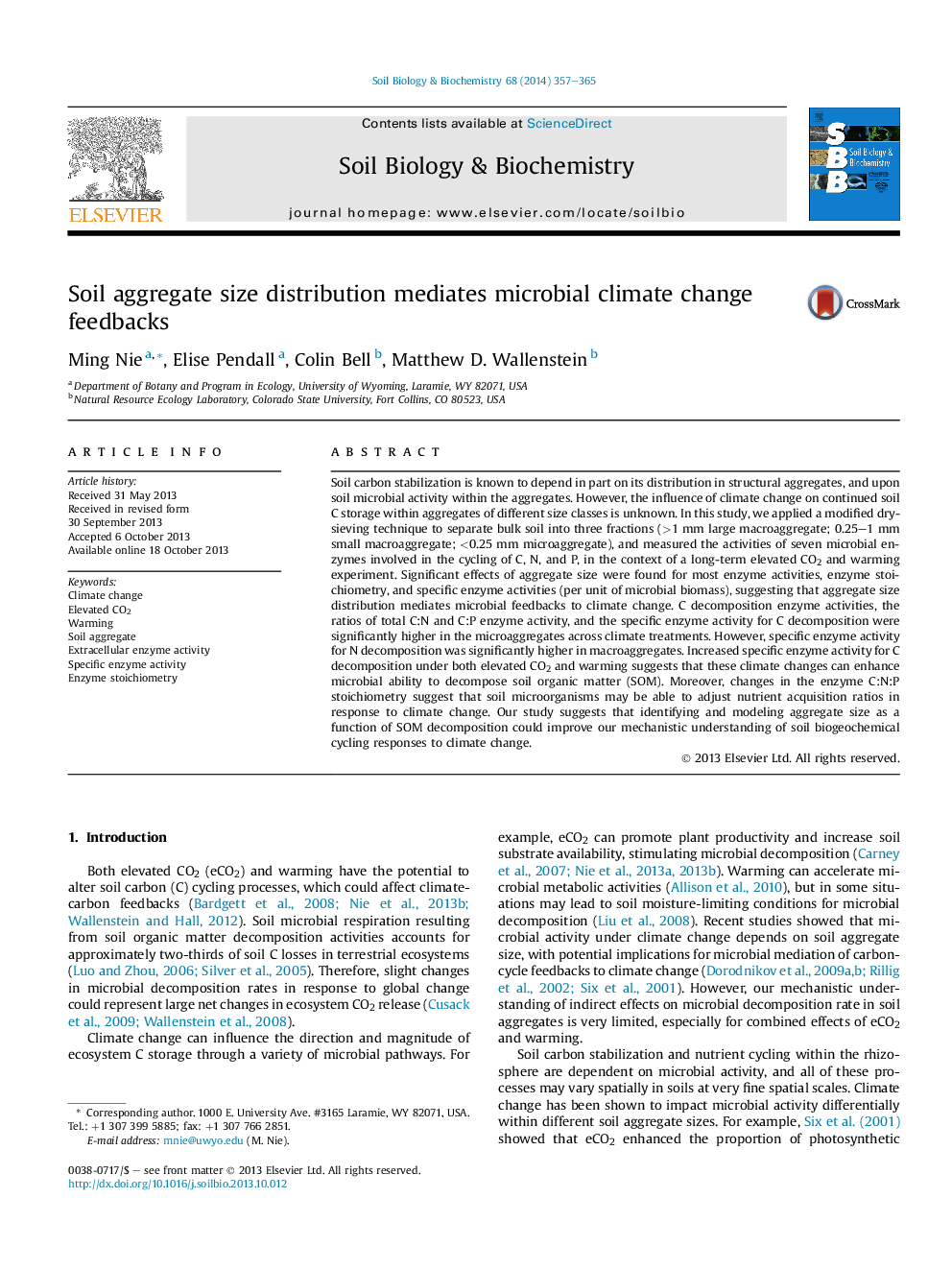| Article ID | Journal | Published Year | Pages | File Type |
|---|---|---|---|---|
| 8365157 | Soil Biology and Biochemistry | 2014 | 9 Pages |
Abstract
Soil carbon stabilization is known to depend in part on its distribution in structural aggregates, and upon soil microbial activity within the aggregates. However, the influence of climate change on continued soil C storage within aggregates of different size classes is unknown. In this study, we applied a modified dry-sieving technique to separate bulk soil into three fractions (>1Â mm large macroaggregate; 0.25-1Â mm small macroaggregate; <0.25Â mm microaggregate), and measured the activities of seven microbial enzymes involved in the cycling of C, N, and P, in the context of a long-term elevated CO2 and warming experiment. Significant effects of aggregate size were found for most enzyme activities, enzyme stoichiometry, and specific enzyme activities (per unit of microbial biomass), suggesting that aggregate size distribution mediates microbial feedbacks to climate change. C decomposition enzyme activities, the ratios of total C:N and C:P enzyme activity, and the specific enzyme activity for C decomposition were significantly higher in the microaggregates across climate treatments. However, specific enzyme activity for N decomposition was significantly higher in macroaggregates. Increased specific enzyme activity for C decomposition under both elevated CO2 and warming suggests that these climate changes can enhance microbial ability to decompose soil organic matter (SOM). Moreover, changes in the enzyme C:N:P stoichiometry suggest that soil microorganisms may be able to adjust nutrient acquisition ratios in response to climate change. Our study suggests that identifying and modeling aggregate size as a function of SOM decomposition could improve our mechanistic understanding of soil biogeochemical cycling responses to climate change.
Keywords
Related Topics
Life Sciences
Agricultural and Biological Sciences
Soil Science
Authors
Ming Nie, Elise Pendall, Colin Bell, Matthew D. Wallenstein,
